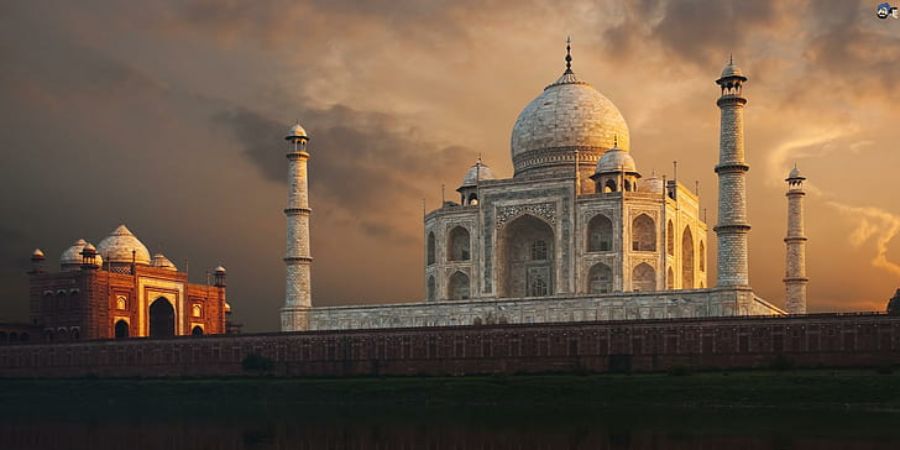

The eye catching Darwaza is 93 ft high and is built chiefly with marble. A verse from the Quran has been inlaid in Calligraphic style over its archway: O soul, thou art at rest ,return to the lord at peace with him and He at peace with you.
The original design of the garden of the Taj was inspired by Shah jahan's great- great grandfather Babur's classic Charbagh style of Garden. A persian concept that Babar introduced to India, the Charbagh 4 quarters of the garden is divided by raised Pathways into 16 flower beds traditionally, at tomb occupied the centre of the garden but in this case Shahjahan choose to have a marble tank in which the Taj Mahal was holy and perfectly reflected.
To maintain symmetry the Taj is flanked on either side by the mosque and the Naqqar khana. built facing Mecca the moscow's made of red sandstone. The remains of Mumtaz Mahal where first kept here before being shifted to her tomb.
The taj itself stands on a raised, square platform with its four abridge corners, forming an unequal octagon. 4 minarets ,each 162.5 m high,border the central dome which is 58 feet in diameter and 213 feet in height.
Steps lead down to the crypt which contains the tombs of Mumtaz Mahal and Shah Jahan. ironically the only element that disturbs the painstaking symetery of the taj is the tomb of Shah Jahan himself .his Tomb which lies next to that of Mumtaz Mahal was never planned and disturbs the tidiness of the Taj's interior.
Besides the inlay work the calligraphic work Is outstanding. Amanat Khan ,a persian calligrapher, choose versus and passages from the holy book of Korean. The calligraphy was done by inlaying Jasper in the white marble panels.
A National Treasure no doubt , the taj has not always been cared for or cherished. By the late 19th century,it had fallen into disrepair. In 1857, British soldiers and government officials chiselled out the precious stones and defaced the Taj. Fortunately ,Lord Curzon who was viceroy towards the end of the 19th Century took in upon himself to restore the taj to its former Glory. By the mid 20th century, the taj was in better condition and scaffolding was erected to protect it during the Second World War and both the Indo pack Wars.
But towards the end of the 20th century, the taj was once again threatened, this time by industrial pollution which had caused the marble to yellow and Erode. Despite being declared a UNESCO World Heritage site in 1983 ,the cause of the taj languished until eminent personalities began a campaign to save the Taj.
Shah Jahan fell ill in 1657 and was dethroned and imprisoned by his son Aurangazeb. Imprisoned in the Agra Fort, he spent his days gazing at the TajMahal in the distance. He died in 1666. Legend as it that even on his deathbed, he kept his eyes fixed firmly on the Taj.
Thanks for Reading🙂
~ Rekha










